A valve amplifier or tube amplifier is a type of electronic amplifier that uses vacuum tubes to increase the amplitude or power of a signal. In audio applications, valves continue to be highly desired by most professional users, particularly in recording studios’ equipment and guitar amplifiers. Among stereo enthusiasts, there is a subgroup of audio buffs who advocate the use of tube amplifiers for home listening; they argue that tube amplifiers produce a “warmer” or more “natural” valve sound. Tube sound (or valve sound) is the characteristic sound associated with a vacuum tube-based audio amplifier.
Before the rise of the transistor in the 1950s, all amps used vacuum tubes. Still the audible significance of tube amplification on audio signals is a subject of continuing debate among audio enthusiasts. Audiophiles disagree on the relative merits of tube vs solid state amplification. Tube amplifiers have retained a loyal following amongst some audiophiles and musicians. Some musiciansprefer the distortion characteristics of tubes over transistors for electric guitar, bass, and other instrument amplifiers.
Today tubes are the incandescent light bulb of the audio world: an older, relatively inefficient technology that consumes a good deal of energy to output a modest amount of power. For power amplifiers solid state designs can be manufactured without output transformers and are therefore immune to speaker-dependent impedance mismatches and transforer effects. I have been long the person who has usef transistors for hifi applications and considered they to be better for hifi amplifiers.
Tubes have their place in audio processing where you want to add to the sound the “warm tube distortion” sound (for example in guitar amplifiers). For preamplifer use tubes can work well. To get the idea of tube sound and how tube preamps works, I got this cheap kit for experimenting: AC12V/1A Stereo 2.0 Pre Amplifier Headphone Module Amplifier Buffer Board. It is a preamplifer that is suitable for conntrolling volume of line level audio signals (attenuate or amplify) and maybe add some magic tube sound to audio. Cheap way though of experiencing ‘tube sound’!
Type: FE-6J1-2.0B
Channel type: 2.0/ stereo
Power input: AC12V 1A / 5.5*2.5 plug
Knob function: Power switch / volume control
Size: 76 x 74 x 20mm
Pre-amp tube diameter: 18mm
Everything was packed to a plastic bags.
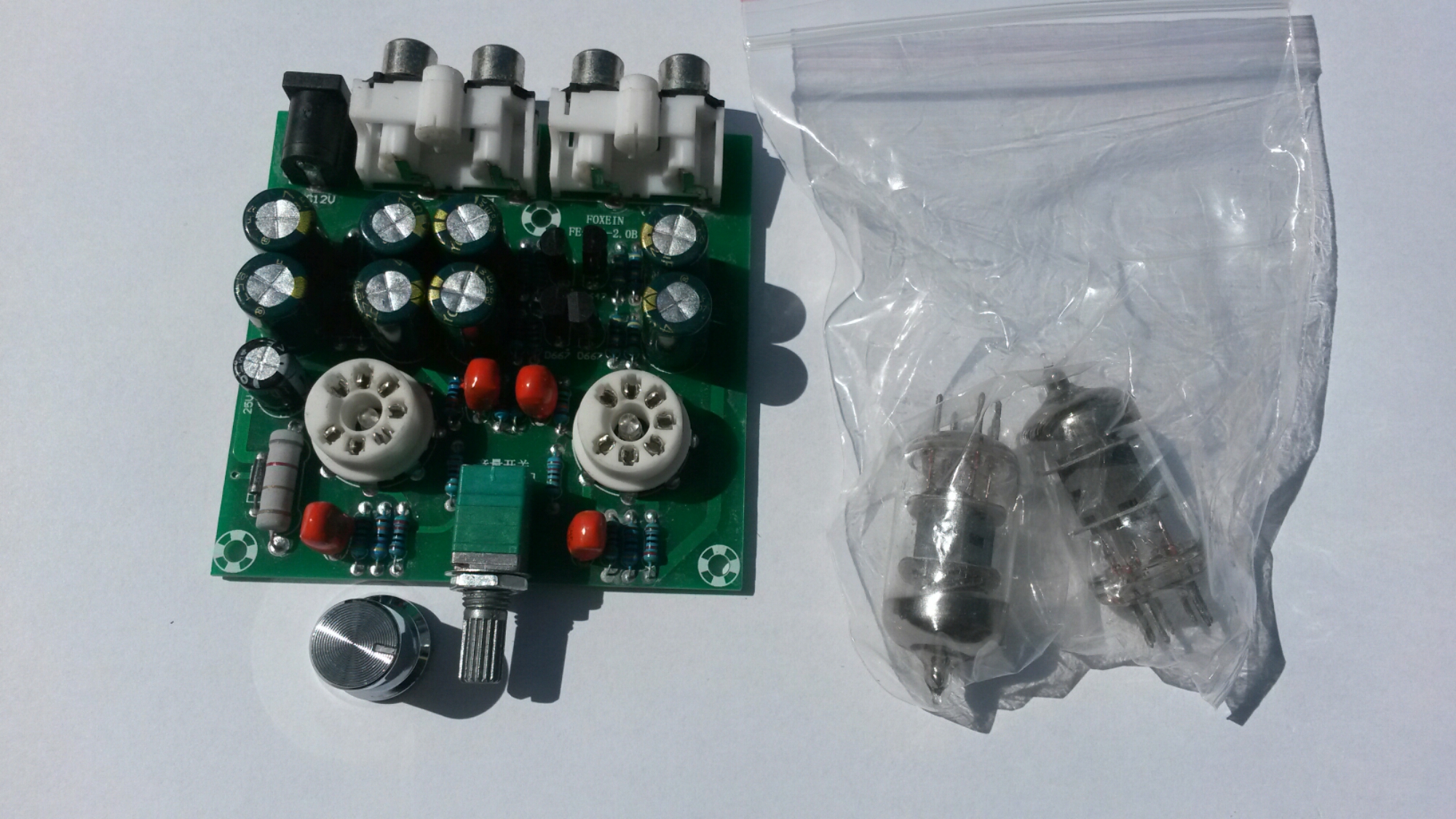
There seem to be some small LEDs in the center of tube sockers. Those are blue LEDs that make the tubes to glow in blue color.
One tube installed.
The volume control in this board is combined volume control and power switch: The knob rotates counterclockwise to reduce the volume, when the volume to the hour, continues to rotate, until the “tick” sound, then power off, lights out.
A look to the connectors…
On the left side: Audio signal input terminals that can be connected to mobile phones, computers, MP3, MP4, and other music player.
On the right side: The output terminal of the audio signal can be connected to an audio signal input terminal of a power amplifier and a power amplifier board. And next to them power input (12V AC 1A).
When I powered the amplifier, it did what it promised. It worked OK as a preamplifier.
Voltage amplification can be controlled from zero to around 6 times (around 15 dB).
The output worked on testing well to over 2Vpp input signal amplitudes at maximum amplitude without noticeable distortion on oscilloscope screen starting to appear.
The signal output impedance is around 3 kilo-ohms. That works well as line level signal preamplifier that drives power amplifier. This circuit is not headphone amplifier that drives headphones (if you thing if that from product name), it would would be pretty non-ideal headphone amplifier for low impedance headphones.
Does what it describes as preamplifier for audio signals. It sounds good, but I can’t find it to be adding any magic “tube sound” to the audio. The circuit adds some slight huming though (at more than about 1/3rd volume).
Note on powering: you need an (not DC) 12V plugpack or transformer. The kit says it needs 12V 1A power supply, so that what I used (I did not measure the actual power this circuit takes).
Ti get better idea how this circuit amplifier works, a circuit diagram would be nice. With some Googling I found that there are several pages that tell about this or very similar tube amplifiers:
https://www.circuitlab.com/circuit/9vnehk/fever-6j1-tube-pre-amp-circuit/
http://www.diyaudio.com/forums/tubes-valves/286349-6j1-tube-buffer-circuit-diagram.html
The best circuit diagram I could found was this at https://www.circuitlab.com/circuit/9vnehk/fever-6j1-tube-pre-amp-circuit/
It seems to be mostly correct (shows only one channel), but has some small details that do not seem to be correct (for example connection of resistor on amplifier output should be connected to ground and not -28V). By the way the circuit diagram can be edited at https://www.circuitlab.com/editor/#?id=9vnehk
As you can see in the circuit diagram the power supply part converts the 12V AC input to +28V and -28V power rails that are used to power the tube. This means that the tube is run at 56V voltage (which is quite low voltage for an audio tube circuit, they typically operate at 100-300V voltage depending on tube type). This 56V voltage is good for safety – it does not hurt too much if you accidentally come in contact with this voltage when you test the board before putting it to case.
The power supply circuit consists of voltage multiplier + rectifier circuit followed with filter capacitors, some transistor circuitry (emitter follower with current limiting, somewhat resembles gyrator circuit) and more filter capacitors.
The tube heaters are directly powered from input 12V AC (two 6.3V heating coils in series can be powered from 12V AC).
Information on the 6J1 tube used can be found at http://www.radiomuseum.org/tubes/tube_6j1.html and http://greatsound168.pixnet.net/blog/post/254453398-%E4%BA%8C%E5%8F%B06j1%E7%B7%A9%E8%A1%9D%E7%B4%9A%E7%9A%84%E5%88%86%E6%9E%90
Another preamp circuit using 6J1 tube at http://www.yunwt.net/1mydiy/qt14.htm
The basic design of this AC12V/1A Stereo 2.0 Pre Amplifier Headphone Module Amplifier Buffer Board seems to be sensible. If I had designd this I would maybe had designed few things slightly differently (for example power supply filtering and maybe tube heating) – that could have maybe reduced the slight mains humming on the output. Anyways as it isC12V/1A Stereo 2.0 Pre Amplifier Headphone Module Amplifier Buffer Board seems to be good quality cheap tube preamplifier.
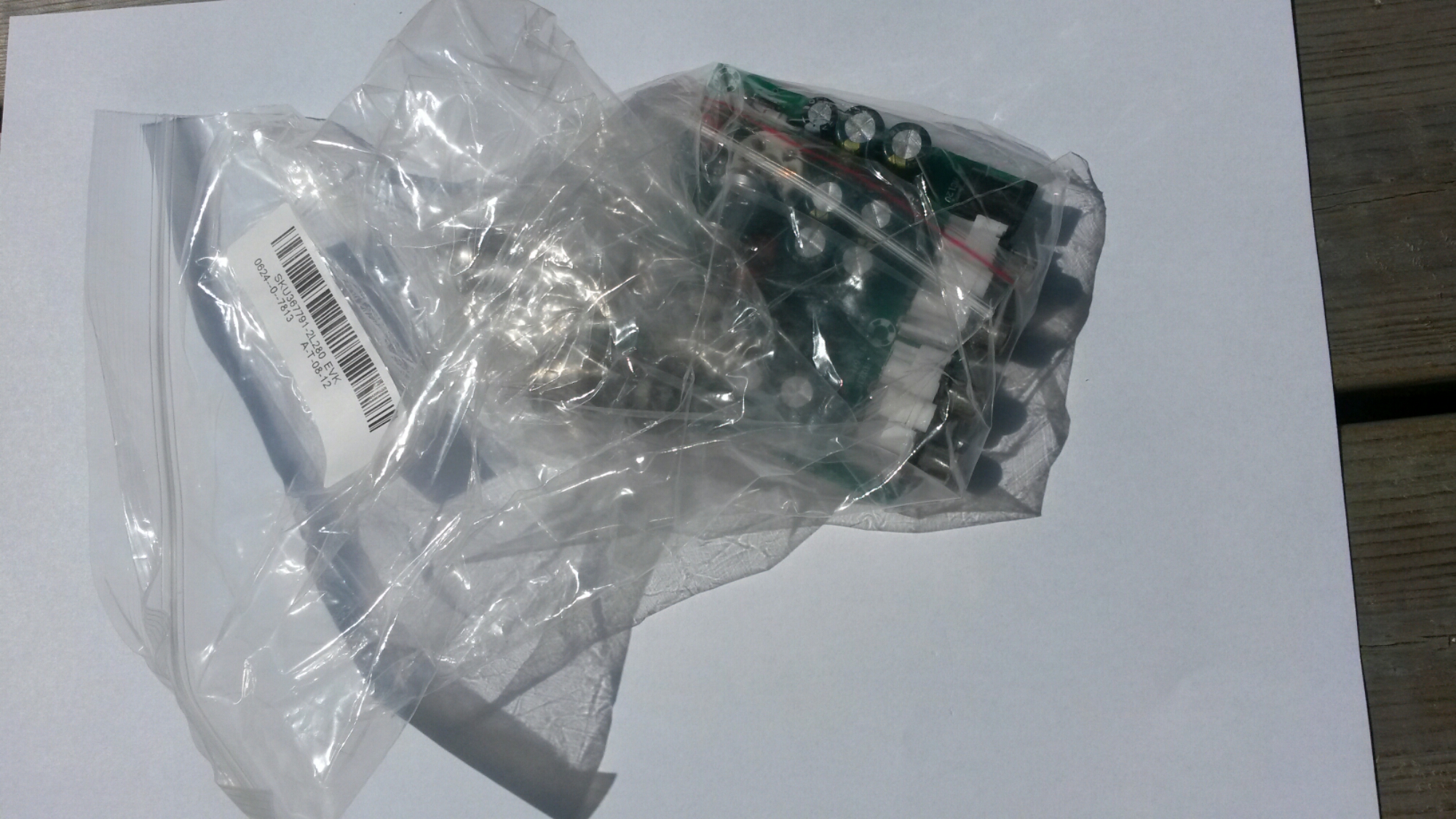
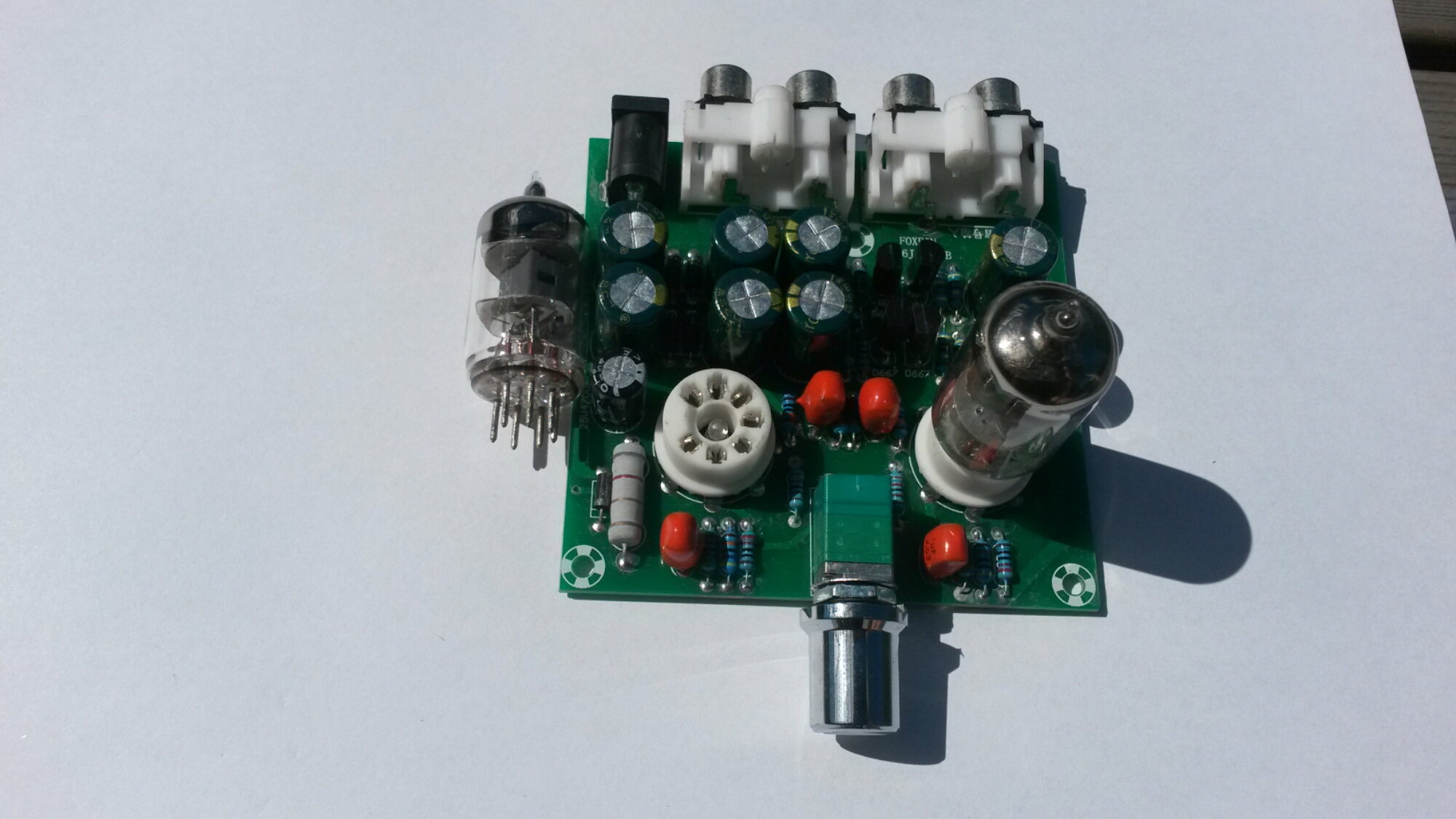
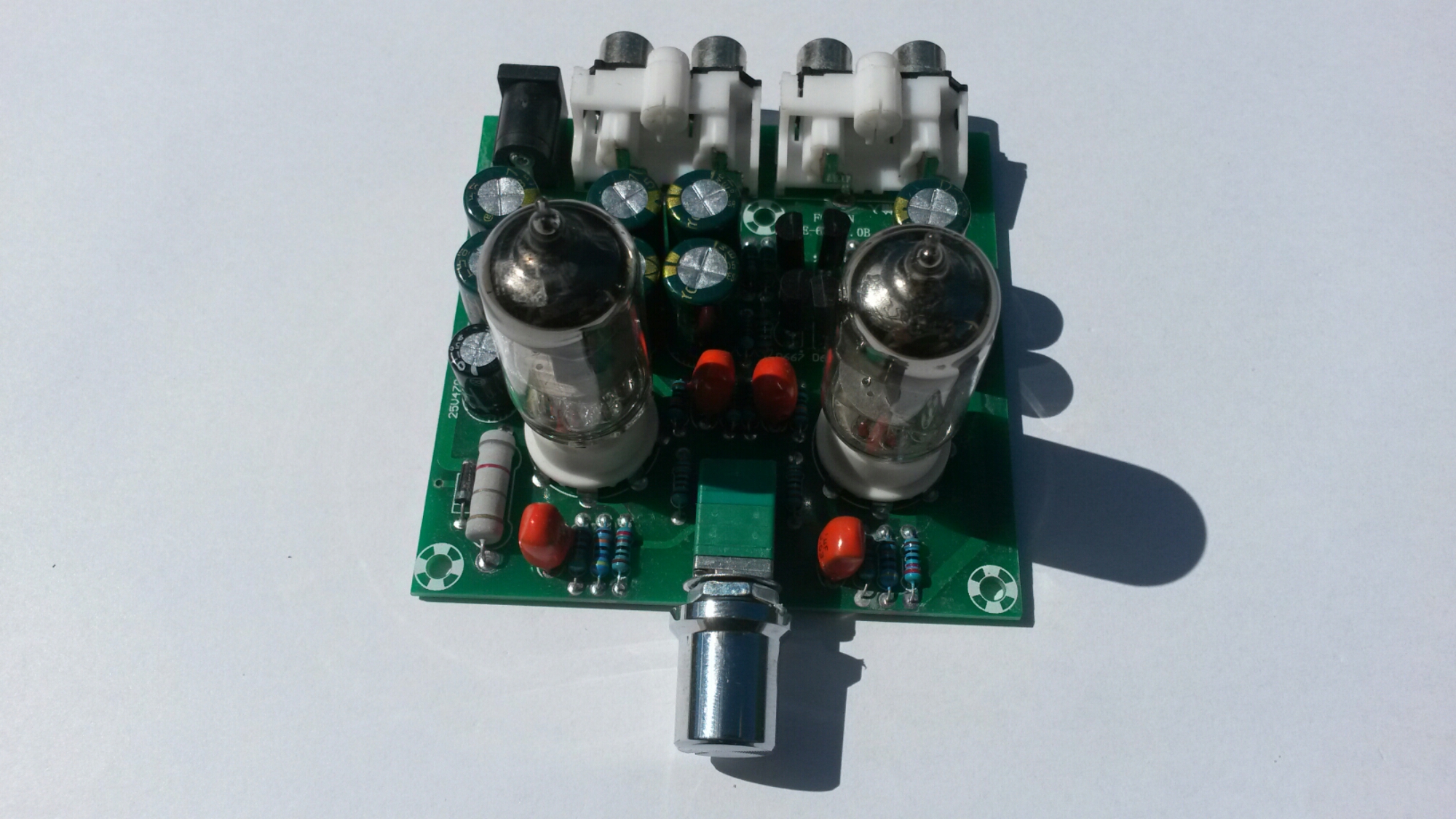
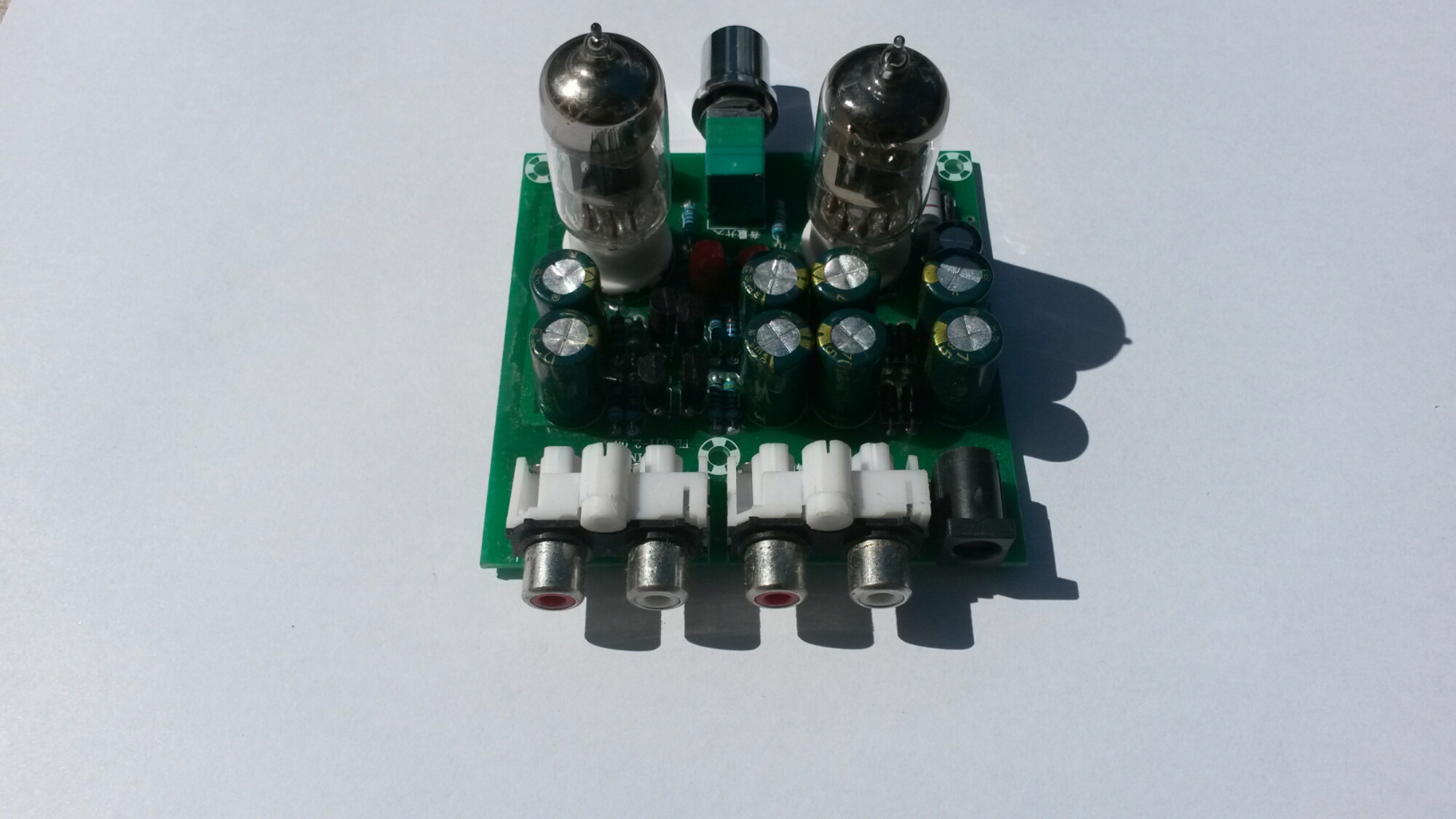
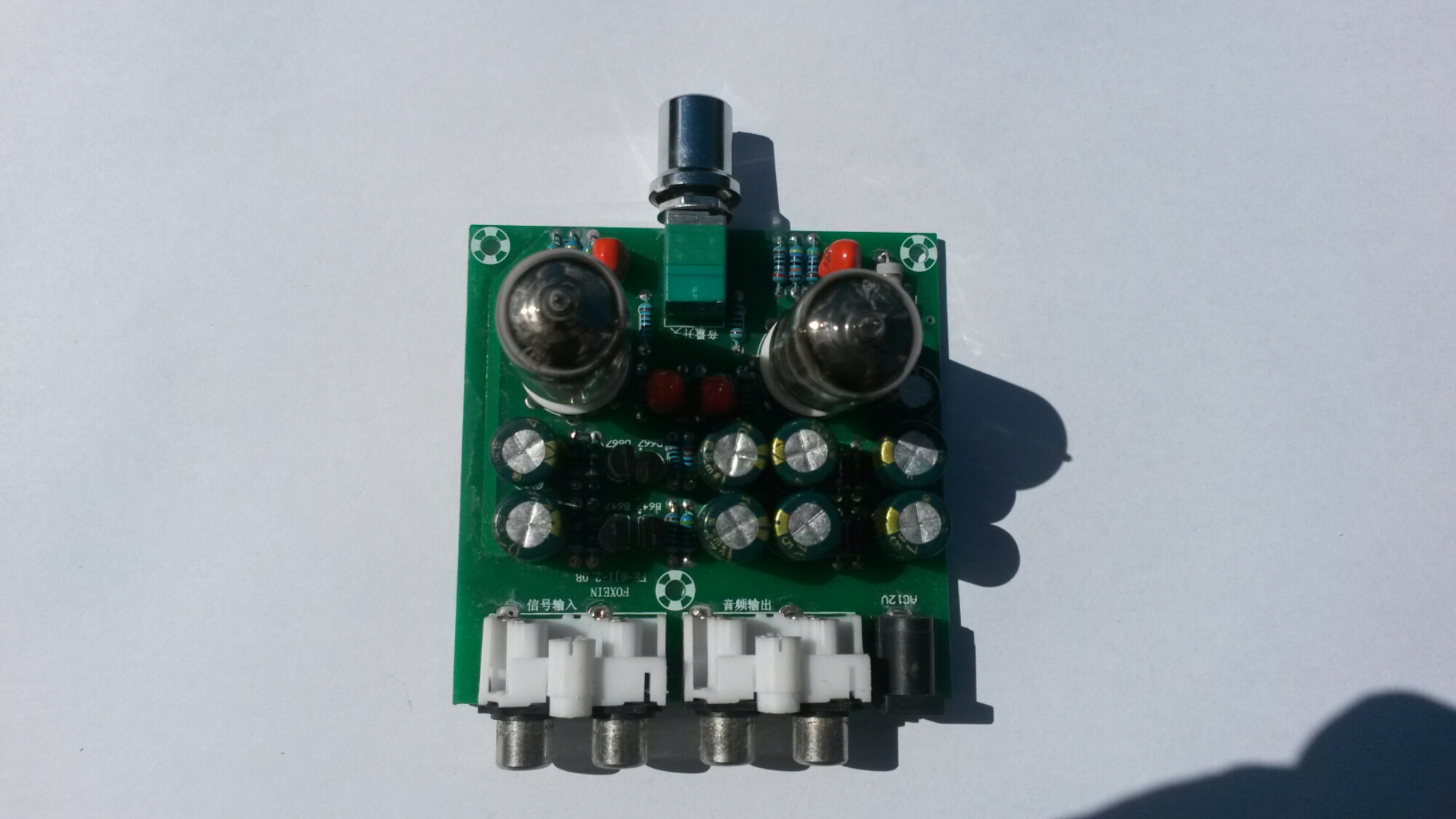
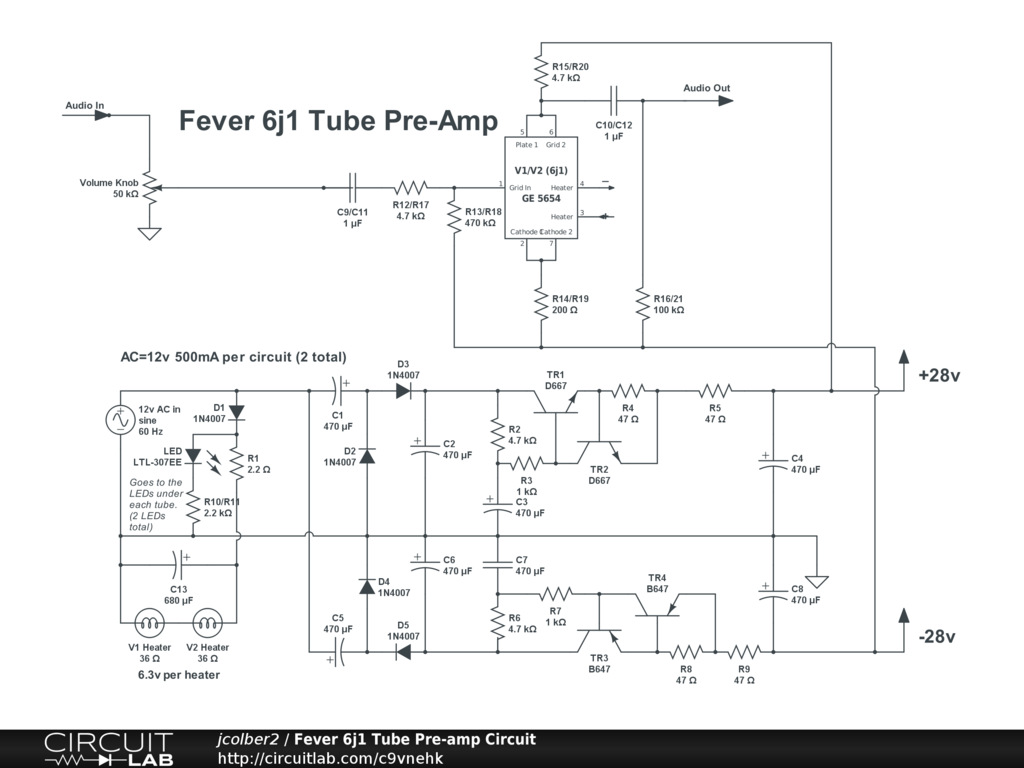
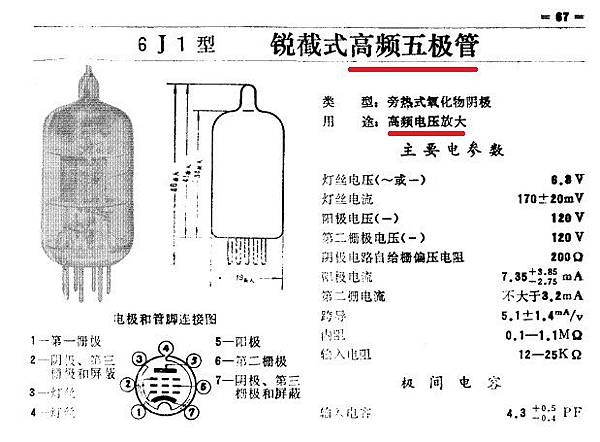
292 Comments
Tomi Engdahl says:
Testing vacuum tubes without a tester
Short, leakage and emission testing with just basic tools
https://hackaday.io/project/185947-testing-vacuum-tubes-without-a-tester
I needed to test some vacuum tubes, but not so many that getting a tube tester makes sense. But by analyzing the design and usage of popular testers we can do the tests with just a standard multimeter, power supplies, resistors and some test clips.
This project breaks down what the testers are, how they work, and how we can do the testing without one.
Tomi Engdahl says:
https://hackaday.com/2022/07/03/testing-a-tube-without-a-tube-tester/
Tomi Engdahl says:
Oscilloscopes For Audio 101 – Part 4A Single Ended Tube Amplifier Troubleshooting
https://www.youtube.com/watch?v=KkJ_WOVWQWM
Tomi Engdahl says:
Vacuum tube amplifier supplied entirely
https://hackaday.io/project/169481/gallery#d9bca203371d7d7465715d171cbfe3fd
Tomi Engdahl says:
The EF50, the Tube that helped to Win the War
The history of a pioneering tube that was developed by Philips Research and that was, next to the magnetron, “The most important tube from World War II”
Ronald Dekker
https://www.dos4ever.com/EF50/EF50.html#taffy
Tomi Engdahl says:
Early 1940′s RTL Airline Tube Tester Teardown With Explanation.
https://www.youtube.com/watch?v=JoaXFoOKlPE
Lets look inside and see how it’s assembled. Then, will it test a tube? Let’s find out. Enjoy! For links, click the SHOW MORE tab below.
Tomi Engdahl says:
Etuvahvistinkonsepti mikropiireillä Revenge-hengessä
Single ended -putkipäätteille etupää puolijohteilla!
https://audiovideo.fi/opas/etuvahvistinkonsepti-mikropiireilla-revenge-hengessa/
Mauri Pännäri: Heräsi kiinnostuspuolijohdepohjaiseen etuvahvistimeen, jonka voisi parittaa sujuvasti kaikkien putkipäätteiden kanssa. Toteutus parhailla audiomikropiireillä tuntui olevan helpoin polku ja päätin yrittää.
Tervehdys pitkästä aikaa kaikille AudioVideon lukijoille. Putkivahvistinrintamalla on itselläni ollut vähän hiljaiseloa. Säröominaisuuksiltaan tähän asti parhaan single ended -päätevahvistimen olen kuitenkin saanut kasaan, soundissakaan ei ole moitteen sijaa. Se on jatkokehitelmä täällä Timo Toikkasen kanssa julkaisemaani PL36- rakennusohjeeseen.
Nyt pääteputkena on SQ (Special Quality) Mullard teollisuusputki EL360 ja keulassa on Philips / Xaerix -tietoliikenneputki E83F. Päätemuuntajat ovat Lundahl LL1664 / 3 kohm / 100 mA.
Hämmästyin kun proto pudotti HP 8903B -analysaattoriini 1 W /1 kHz THD- särölukeman 0,06%. Säröarvo riippuu tässä keulaputken väännöstä, toinen kanava näytti 0,3%. Ei kovin tyylikästä, mutta tällaista se on vastakytkemättömissä vehkeissä! Vaihtamalla siihen samalla jyrkkyydellä toimiva keulaputki, tuli sama hyvä tulos molempiin kanaviin, pääteputket kun oli jo alunperin paritettu hyvin tarkkaan. Särö on reilun puolen vuoden käytössä ajautunut arvoon 0,2% putkien suhteellisen väännön muuttuessa.
Lähiaika onkin sitten mennyt protoillessa operaatiovahvistimiin perustuvaa linjaetuvahvistinta, johon myöhemmin sisällytin myös RIAA-asteen ja äänenvärin säädöt. Proto lähti soimaan yli vuosi sitten ja ja lopputulos on itseäni tyydyttävä kaikin puolin. Tämä vahvistin ei ole “Blameless”, kuten D. Selfin jotkut tekeleet, vaan pitkään haettu ja kuuntelulla testattu näkemykseni hyvälaatuisesta minimalismista.
1980-luvulla olin hyvinkin aktiivinen uusien vastalanseerattujen oparityyppien kanssa, ja silloisessa Hifi-lehdessä esiteltiinkin LF356, LF357, NE5533, TL072 ja OP27/37 -piireillä rakentamiani etuvahvistimia, joista parhaiten on jäänyt elämään kaksiasteinen 5533-pohjainen RIAA. Se on aivan käypää valuuttaa tänäkin päivänä ja löytyy kirjasta ‘Tee itse elektroniikkaa’.
Ensimmäiseksi: Äänenlaatu pitää saada sellaiseksi että laitteen kehtaa laittaa minkä tahansa putki- tai puolijohdepäätteen eteen ja vielä niin, että kun hana on kiinni, systeemin peruskohinatason määrittää aina päätevahvistin.
Toiseksi: Monimutkaiset akateemiset härvelit servoineen pitää sulkea pois ja pyrkiä hyväsoundiseen minimalistiratkaisuun, joka on loogisesti selkeä ja kenties jopa houkutteleva kaupalliseeen monistukseen. Kolmanneksi: virransyöttöön on lisäksi panostettava. Lohkokaaviosta tuli tältä pohjalta seuraavan kuvan mukainen.
Rakentaminen ja kokeilu lähtivät liikkeelle linja-asteesta. Minulle oli sen enempää miettimättä selvää, että teen sen invertoivalla vahvistimella, sillä kun on meriittinsä ainakin minun korvilleni. Ei-invertoiva sisäänmenokin voidaan ehkä maadoittaa suoraan, jolloin saadaan yksi kohinaresistanssi pois laskuista. Tämä saadan kyllä huonomman common mode -käytöksen kustannuksella, mutta sillä ei ole tässä merkitystä.
Voimakkuusäätimen paikka oli taas kerran mietinnässä. Viimeiseksi ketjussa sijoitettu pieni-impedanssinen (logaritminen 2,2 ohm tai 5 kohm) voimakkuudensäädin nollilla sulkee tässä koko etupään peruskohinan ja määrittää siis systeemin peruskohinan päätevahvistimen peruskohinan tasoon.
Turhat kondensaattoritkin piti saada pois ja tämä johti lopulta fet-ottoisiin opareihin, niissä kun biasvirta on pikoampeeriluokkaa ja offsetti pysyy aisoissa.
Topologiat ja komponenttikokeilut
Ensimmäinen kokeiluni linjaan oli kylläkin bipolaari-videopiiri LM318 (50 MHz). Äänenlaatu oli oikein hyvä ja olisin kelpuuttanut piirin enempiä kokeilematta heti jatkoon mutta se osoittautui liian herkäksi värähtelemään harrastajan kytkentöihin ilman ylimääräisiä kompensointikomponentteja ja luovuin tämän jatkokehittelystä.
Lopulliseen kytkentään jäi sitten monien kokeilujen jälkeen Texasin TLE207x, joka on evoluutioversio vanhasta mainiosta TL07x-sarjasta.
Protossani on kiinteä 3-kertainen linjavahvistus.
Äänenvärin säätöaste on toteutettu aktiivisena Baxandall-versiona, vanhan koulukunnan poikittaista passiiviratkaisua (a’la Köykkä ja muut kitarapuolen “tonestakit”) en edes miettinyt.
RIAA:n pitää paitsi mittautua, myös soida kauniisti
RIAA-aste on toteutettu yhden asteen ns. Baxandall-versiona (viite 1) ja 1 Khz -vahvistus on 37 dB. Valintaperusteenani on korvalleni hyvin natsaava vinyylitoisto.
Pitkä tie protoilusta rakennussarjaksi
Nämä kokeilut ja prototyyppi johtivat yhteistyöprojektiin Uraltone Oy:n kanssa ja noin vuoden puurtamisen jälkeen saatiin loppukesästä 2021 ensimmäiset rakennussarjat myyntiin. Tämä yhteistyö on kyllä hieno palanen suomalaista DIY-kit-historiaa, vaikka nyt itse sanonkin.
Tomi Engdahl says:
Where vacuum tubes work best
https://youtu.be/TJR8tEYORzg
Tomi Engdahl says:
https://en.m.wikipedia.org/wiki/Fetron
The Fetron was a range of solid-state, plug-compatible replacements for vacuum tubes (valves).
Fetrons were manufactured by Teledyne Semiconductor from 1967; primarily as a low-maintenance and low-power swap-in to replace vacuum tubes, which were becoming increasingly obsolete and difficult to source with the widespread use of solid-state electronics. They were used in large numbers in telephone exchanges.
A typical fetron consisted of a cascode configured pair of JFETs, some simple RC networks to control the device characteristics, and a fuse. The device was mounted in a metal tube with a base that has the same pin-out as the vacuum tube that it replaced.
Fetrons were used to upgrade oscilloscopes and similar test equipment.[4] They were used in specialist audio amplifiers such as the Mesa Boogie Mark Series.
Fetrons occasionally appear on eBay and similar, and are collected by vintage radio enthusiasts.
Tomi Engdahl says:
This is interesting too.
http://www.worldphaco.com/uploads/WORLDFETRON.pdf
Tomi Engdahl says:
Capacitor phase shift
https://youtu.be/h9grCPe7baI
Tomi Engdahl says:
https://gearspace.com/board/so-much-gear-so-little-time/1367908-transformers-explained-2.html
Tomi Engdahl says:
https://groupdiy.com/threads/transformer-coupled-preamps-phase-shifts-in-output.2049/
Tomi Engdahl says:
https://brimaruk.com/menugbvp/great-british-valve-project-2/
Tomi Engdahl says:
https://www.jjtubes.eu/
Vacuum tubes, capacitors, socketsWe specialize in vacuum tubes and offer high quality tubes, sockets, capacitors, and other parts of manufacturer JJ Electronic.
Tomi Engdahl says:
https://www.westernelectric.com/expand
WE+-+Wordmark_Black.png
We make electron tubes
Tomi Engdahl says:
Class-A2 and Single-Ended
https://www.tubecad.com/2018/01/blog0410.htm
If audio-electronics world possessed stand-up comedians, they wouldn’t be short of material. Magic rocks, mystical pebbles, and $100,000 loudspeaker cables are too obvious and too easy examples of comedy fodder. Hell, I could probably do an entire stand-up routine devoted to audio salesman, save for the fact that few under the age of 50 have ever encountered one, as they are quickly becoming as extinct as TV repairmen. I even know an audiophile joke: two audiophiles run into each other and the first tells the second that their fellow audiophile, James, is dead. The second responds, “That’s terrible. What did he have?”
“He was still running his Linn turntable, but with the new Schroeder tonearm and the Soundsmith Zephyr cartridge, with a VAC preamp …”
A more complex example, but still filled with mirth-making potential, might be amplifier classes of operation, which are a ridiculous mess, only made messier by glossy ads in audio magazines. Class-A by itself is one huge box of tangled junk parts, further jumbled by the makers of high-end class-A amplifiers, amplifiers that supposedly exceed the theoretical maximum efficiency 50% for any class-A amplifier. (I get email that asks, “What do mean by saying that you can’t get 60W of class-A power from a pair of KT88s” Company Z does it all the time.”) As I understand it, many believe that any power amplifier that uses cathode bias is, by that fact, running in class-A. Alas, it ain ‘t so.
At the RMAF, I asked the maker of a single-ended amplifier that held one 25W output tube how could the single tube possibly be delivering 25W of output, as that would imply at the very least 50W of dissipation from the output tube, with a more realistic implication of 100W of dissipation? His answer was that the tube was good for more than 25W, besides he was running class-A2.
Class-A2 means that we purposely allow the output tube to enter positive-grid bias, so that the usually super-high impedance grid becomes a low-impedance load as the grid begins to conduct current; when the grid goes positive relative to the cathode, the grid becomes a forward biased diode with the cathode. If we don’t prepare for the abrupt decrease in grid resistance, class-A2 goes wrong, with the coupling capacitor charging up excessively, making the output tube see too negative a bias voltage. In contrast, a cathode follower driving the grid positive can suck up the sudden increase current flow.
Tomi Engdahl says:
This guy is amazing – he made his own tubes! YouTube video is almost an hour long. If you can’t watch all of it, at least skip to the 45 minute point and see what’s inside that A-B variable resistor – I’ve never seen a pot like that!
Building a 1920s Tube Amplifier (And Tubes!)
https://m.youtube.com/watch?v=-UEfqAWb3fE&feature=share
Tomi Engdahl says:
https://hackaday.com/2022/10/27/a-homemade-tube-amplifier-featuring-homemade-tubes/
Tomi Engdahl says:
Output transformerless (OTL) is a type of vacuum tube audio power amplifier, which omits an output transformer for the purpose of greater linearity and fidelity. Conventional vacuum tube amplifier designs rely upon an output transformer to couple the amplifier’s output stage to the loudspeaker.
https://en.m.wikipedia.org/wiki/Output_transformerless
OTL power amplifiers for driving loudspeakers require multiple tubes in parallel to obtain the required drive current. An alternative is to use high impedance loudspeakers (now rare, but the Philips produced 400 and 800 ohm speakers, such as type number: AD4690/M800).
OTL headphone amplifiers are more common, as typical headphones require the current that a single pair of tubes can provide.
Tomi Engdahl says:
https://en.m.wikipedia.org/wiki/Valve_audio_amplifier_technical_specification
Tomi Engdahl says:
OTL is an acronym which stands for “output transformerless”. OTL amps stand apart from regular tube amplifiers which use high voltages and therefore require a transformer to convert to a speaker’s low voltage.
https://www.phantom-audio.com/otl-amplifiers/
OTL Vs SET Tube Amplifiers
A SET (or Single-Ended) tube amplifier is the next-best thing to an OTL amp, but it still cannot match up to the quality of sound that the OTL amplifier can offer.
A Single Ended amp features just one power tube which connects to an output transformer. As DC power is drawn through the transformer, a magnetic field is established which is at half of the amp’s resting total possible current. There is no need for the magnetic field at any time to reverse its polarity – only its strength changes. Therefore, making small current changes via the transformer is relatively simple.
As a result, SET amps offer better inner lower-level detail than push-pull amplifiers and this makes them a popular choice. However, merely having a transformer in the signal path at all can result in signal degradations and this is why the OTL amp offers a far better quality of sound since it eliminates the transformer from the equation.
Due to distributed capacitance within the windings, series inductance, resistive loss, and hysteresis loss, the transformer can inhibit bandwidth, dynamics and bass, thus causing tone colours to be obscured and detail to be lost. In transformers with a larger output, it’s virtually impossible to get the treble and bass right simultaneously because of these issues.
Meanwhile, OTL technology can correct this. As there is no transformer, amplifiers can deliver signals at an identical speed to a transistor amplifier while also boasting the sonic benefit that tube amplifiers offer.
A History Of OTL Amplifiers
During the 1960s-1970s, OTL amplifiers were said to be unreliable, mostly because of the Futterman circuit which was, for a considerable period of time, the most visible OTL on the market and well-known for its stability problems. When the amp was in oscillation (something that could be caused by anything from layout problems or component failure to overload) it was prone to destroying itself. So, it wasn’t too surprising that the public linked the problems associated with this circuit will all OTLs. In recent years, though, the most advanced OTLs have overcome the Futterman circuit’s early problems by utilising completely different circuitry.
OTLs that are made by Atma-Sphere are capable of driving a much broader spectrum of speakers than previously had been possible because of the reduction in output impedance they guarantee. For this reason, Atma-Sphere OTLs are commonly used with 8-ohm speakers, with 4-ohm speakers being frequently used with the larger Atma-Sphere amplifiers. However, it is with the 16-ohm speaker that Atma-Sphere’s OTLs really excel
Tomi Engdahl says:
https://diyaudioprojects.com/Technical/Tube-Power-Supplies/
Tomi Engdahl says:
https://en.m.wikipedia.org/wiki/Vacuum_tube_battery
Tomi Engdahl says:
Audio Amp Puts VFDs To Work In An Unusual Way
https://hackaday.com/2022/12/08/audio-amp-puts-vfds-to-work-in-an-unusual-way/
It’s safe to say that most projects that feature a VFD emphasize the “D” aspect more than anything. Vacuum fluorescent displays are solid performers, after all, with their cool blue-green glow that’s just the right look for lots of retro and not-so-retro builds. But that doesn’t mean there aren’t applications that leverage the “V” aspect, such as this nifty audio preamp using VFDs as active components.
The inspiration behind [JGJMatt]’s build came from the Korg Nutube line of VFD-based low-voltage dual-triode vacuum tubes. Finding these particular components a little on the expensive side, [JGJMatt] turned to the old standby DM160 VFD indicator tube, which is basically just a triode, to see how it would fare as an amp.
https://www.instructables.com/Audio-Preamp-Built-From-VFD-Indicator-Tubes/
Tomi Engdahl says:
Understanding Distortion (Pt1) – Tube amps Vs Solid State
https://www.youtube.com/watch?v=UcNKGagfMyg
My first video comparing tube amp distortion vs solid state. See the differences as my Spectrum Analyzer tells the truth!
Tomi Engdahl says:
What does distortion look like?
https://www.youtube.com/watch?v=pFSX93aPzmw
Understanding Distortion (Pt2) – Diode Clipping circuits
https://www.youtube.com/watch?v=6Qs1H2qTAWI
Demonstration of Overdrive, Distortion and Fuzz effects on oscilloscope and with a guitar signal
https://www.youtube.com/watch?v=8NjeHHroOgI
Tomi Engdahl says:
McIntosh MC451 mono power amplifier combines valve and solid-state tech in one box
By Tom Bailey published 1 day ago
New ‘big mac’ does double duty…
https://www.whathifi.com/news/mcintosh-mc451-mono-power-amp-combines-valve-and-solid-state-in-one-compact-box?utm_medium=social&utm_content=whathifi&utm_source=facebook.com&utm_campaign=socialflow
The new MC451 Dual Mono Power amp combines both valve and solid-state amplification in one (beefy) unit.
The 150 Watt vacuum tube amplifier drives midrange drivers and tweeters, while the 300W solid state section drives the woofers. This nifty “McIntosh Hybrid Drive” technology is adjustable, too…
Users can tweak the crossover point on the back of the MC451 so that frequencies below the crossover point are sent to the solid-state amplifier and frequencies above it will be sent to the vacuum tube amplifier.
Much like the recently-launched MI502, the MC451 is not exactly an impulse buy. Pricing is set at £16,495 / $14,000 (around AU$21,000).
Sound familiar? It’s probably because the MC451 isn’t McIntosh’s first crack at a Hybrid Drive amplifier. The much larger, pricier MC901 performs the same trick but with a lot more grunt (a 300W vacuum tube amplifier combined with a 600W solid-state amplifier).
Tomi Engdahl says:
Tube Audio Amplifiers Needn’t Be Complex
https://hackaday.com/2022/12/26/tube-audio-amplifiers-neednt-be-complex/
There’s a mystique in audiophile circles about tube amplifiers. They can have a very nice sound which is attributed to their even-harmonic distortion, but they are often portrayed as requiring rare and expensive components. You don’t need matched gold-plated tubes and special transformers would by Japanese monks with oxygen-free silver wire when the tube you’d have found in a TV back in the day paired with a repurposed mains transformer will do. [Mikremk] demonstrates this with a simple but effective amplifier using a PCL82 triode-pentode.
It’s a conventional tube amplifier circuit in which the triode is a preamplifier for the pentode power output stage. The pentode is running in class A mode, and the high impedance of its output is brought down to speaker impedance with that mains transformer. Best of all it doesn’t need a particularly high voltage, with the 40 V DC power coming from a DC-to-DC converter module.
DIY Simple PCL82 Low Voltage (12V) Tube Amplifier
https://hackaday.io/project/188788-diy-simple-pcl82-low-voltage-12v-tube-amplifier
How to make a very simple single tube amplifier that also works at low voltage and is powered by 12V DC.
Tomi Engdahl says:
https://audiovideo.fi/opas/rakennusohje-esivahvistin-kahdella-transistorilla/
Tomi Engdahl says:
A Single Ended Vacuum Tube Amplifier With A Modern Twist
https://hackaday.com/2023/01/03/a-single-ended-vacuum-tube-amplifier-with-a-modern-twist/
Electrically it’s a relatively conventional single-ended design using a double triode and a power pentode for each channel. It follows a so-called ultra-linear circuit, with a tap on the output transformer feeding one of the pentode’s grids. The modern features come via a switched Bluetooth input and a motorized volume control, something that would have never been found on such an amp when they were the cutting edge.
https://hackaday.io/project/188931-keritech-little-red-devil-single-ended-el84-amp
Tomi Engdahl says:
Keritech “Little Red Devil” Single-Ended EL84 Amp
A single-ended tube stereo amplifier with a modern technology twist
https://hackaday.io/project/188931-keritech-little-red-devil-single-ended-el84-amp
Tomi Engdahl says:
https://hackaday.com/2023/01/23/vintage-electronics-hack-chat/
Tomi Engdahl says:
https://thehardtimes.net/music/vintage-tube-amp-perfect-place-set-drink/
Tomi Engdahl says:
https://hackaday.com/2023/02/15/curve-tracer-design-for-power-vacuum-tubes-testing/
Tomi Engdahl says:
One Man’s Quest to Revive the Great American Vacuum Tube
https://www.wired.com/story/one-mans-quest-to-revive-the-great-american-vacuum-tube/?utm_social-type=owned&utm_brand=wired&mbid=social_facebook&utm_medium=social&utm_source=facebook
The prized retro audio components are mostly manufactured in Russia and China. Now, a small Georgia company is rebooting US production.
Whitener owns Western Electric, the last US manufacturer of vacuum tubes, those glass and metal bulbs that controlled current in electric circuits before the advent of the transistor made them largely obsolete. Tubes are still prized for high-end hi-fi equipment and by music gear companies such as Fender for their distinctive sound. But most of the world’s supply comes from manufacturers in Russia and China, which after the transistor era began in earnest in the 1960s helped sunset the US vacuum tube industry by driving down prices.
Whitener, a 69-year-old self-described inventor, vintage hi-fi collector, and Led Zeppelin fanatic, bought and revived AT&T’s shuttered vacuum tube business in 1995. The business has ticked along in the era of cheap overseas tubes primarily by serving the small market for vacuum tubes in premium hi-fi equipment with a model called the 300B, originally designed in 1938 to enable transoceanic phone calls.
But recently US trade restrictions on Russia and China, over the former’s renewed invasion of Ukraine and the latter’s ideological disputes with Washington, have sent vacuum tube prices soaring. At one point in 2022, tubes that typically retailed for $10 were offered at prices over $100
Although shipments of Russian tubes have resumed, prices remain high and the quality of overseas tubes has always been unreliable. “You have to buy 100 tubes to get 30 you like,” says Justin Norvell, an executive vice president at Fender. An affordable tube for a guitar preamp is now roughly $30, meaning the company can spend about $90 to get one tube that meets its standards.
Whitener has seized on the current moment of high prices as a chance to reinvigorate his company, the US tube industry, and even the idea of what a vacuum tube can be. Western Electric is currently working on a modernized tube design, an iteration of the all-but-obsolete technology fit for the 21st century. It’s an improved version of a tube called the 12AX7, which is common in guitar preamps and other music gear—a market Whitener estimates is more than 10 times the size of the premium hi-fi business and is today served almost wholly by overseas suppliers. The recently high prices create economic cover, he calculates, to make a better version in Rossville that can be more reliable, durable, and economical than existing designs, turning the US into a powerhouse of vacuum tube technology again.
Whitener is a perfectionist. He aims to launch the 12AX7 this summer, but previous debuts have slipped. His factory is poised to make America the dominate source for audio vacuum tubes, improving the fortunes of Rossville, audiophiles, guitar heroes, domestic manufacturing, and Whitener himself—if he can just get the damn things out the door. “This landscape for the Russian tubes could change tomorrow,” he concedes. “It’s a Walmart world, and that’s a risk.”
How Hard Can It Be?
From the 1920s through the 1950s, the American vacuum tube industry thrived. RCA, General Electric, Raytheon, and other manufacturers competed to invent and manufacture more reliable tubes, which were needed to regulate current and boost the faint signals from analog microphones and instruments enough to drive speakers. But the arrival of transistors, then circuit boards, made tubes obsolete for most uses. American manufacturers couldn’t match prices from overseas. Factories closed. Engineers moved on.
Many musicians and audio obsessives stayed loyal to the tube but increasingly got them from outside the US. Russia and China became the leading suppliers
“I thought, how hard can it be to make these tubes?,” he says. “People are willing to pay $1200 to $1500 a pop for them.”
Predictably, it was harder than Whitener thought. It took him two years to persuade AT&T, which hadn’t made a tube since 1988 but still owned Western Electric, to license the brand and sell him its tube-manufacturing equipment.
After a fortuitous meeting with retired AT&T employees on a visit to Bell Labs, Whitener combed the northeast tracking down veterans of the storied facility, Sylvania, and RCA who knew the arcana of tube-making. When his factory started production of 300Bs in 1996, almost all of his 20 or so employees were tube-manufacturing veterans.
Western Electric was up and running again, but in 2003 AT&T sold the building. Whitener moved the company to Huntsville, Alabama, a NASA stronghold with skilled workers that was convenient for his tube contracts with the Department of Defense. In 2008, he moved the company to Rossville, Georgia.
Whitener’s team devised a way to apply an atom-thick layer of graphene to a vacuum tube’s anode to extend its lifespan by improving heat dissipation and reducing contaminating gases. Those enhanced tubes hit the market in 2020. Quality control—Whitener’s former field—became more automated, and he claims more than 90 percent of tubes now pass inspection off the line.
Western Electric sells pairs of 300Bs in a cherry wood presentation box with a certificate charting their performance characteristics and a generous five-year warranty—yours for $1,500. Copycat sets of 300Bs, offered at the same price, are sold with a 30-day warranty. Most tubes have a warranty of just 90 days.
In 2006, he won an auction for machinery and tooling needed to make 12AX7 tubes; the pieces had started life in Blackburn, England, but were then in Serbia.
Very Pleasant Distortion
The promise of better sound is, like most things among high-fidelity fanatics, subject to vicious debate. Some hear vast differences between brands of tube, or even individual tubes of the same make and model. Others will tell you each tube is indistinguishable from the next. Most agree that tubes in general have a sound that transistors, circuit boards, and algorithms can only approximate, one often described as warm, rich, or even romantic.
“Tubes just distort things in a very pleasant way,”
known for the analog punch it gets from tube-powered mics, amps, consoles, and equalizers.
He says he aims to launch Western Electric’s 12AX7, America’s first new tube in decades, this summer. After that he plans to add a string of additional models, versions of the 6L6, EL34, EL84 12 AT7, and 6V6 tubes—a lineup he calculates makes up almost 80 percent of the relevant music equipment, such as guitar and studio amps. If all goes to plan, the US could once again dominate vacuum tube manufacturing.
Whitener concedes that he’s taking a big risk. Russia looks determined to keep attacking Ukraine, keeping trade embargoes in place, and China-US relations remain tense. But the geopolitics of vacuum tubes could shift again. It’s unclear how loyal people might be to his US-made tubes.
Whitener hopes that even if international supply prices drop, customers will stick with Western Electric after having gotten a taste of the reliably durable tubes. “They are looking for a stable product they can count on,”
Tomi Engdahl says:
You could always just make some… https://youtu.be/EzyXMEpq4qw
Tomi Engdahl says:
FYI: If you don’t want “commie” tubes, you can also buy tubes from JJ Electronic, they’re based in Slovakia.
https://www.jj-electronic.com/en/vacuum-tubes
Tomi Engdahl says:
Velleman Class A K8010 Tube Monoblock Amplifiers – Review!
https://m.youtube.com/watch?v=wf14kJeP-gQ
These are vintage audio, monoblocks that are rated at 65w per channel. They sound great and look great and have a bit of warmth to them. Highly recommend. Sounds as good as McIntosh.
Tomi Engdahl says:
https://hackaday.com/2023/04/04/reshoring-vacuum-tube-manufacturing-one-tube-at-a-time/
Tomi Engdahl says:
How Vacuum Tubes Work
https://www.youtube.com/watch?v=nA_tgIygvNo
I edited and annotated the original 28 minute film “Electronics at Work” down to 3.5 minutes. The annotations help explain how electronic vacuum tubes flow electrons to amplify guitar signals and rectify AC to DC.
Tomi Engdahl says:
Siemens Schatulle #1
https://www.youtube.com/watch?v=J8cnagy5ww8
Viewer comments:
This type of tube radio was the pinnacle of design in this category before the transition to transistor radios. Our Tesla radios looked similar. However, this is the first time I see a radio modified in this way, that the front part was closed with a door. I didn’t really understand the purpose, it didn’t add to the beauty of the radio, and when it’s covered with fabric, it doesn’t even serve the function of keeping the radio from getting dusty, which I would understand if it was a wooden veneered door like a cabinet.
Tomi Engdahl says:
How Does An Output Transformer Work? What’s Impedance Matching?
https://www.youtube.com/watch?v=YJpvvdaUqgM
How does an output transformer work? What does the output transformer do? What’s an output transformer? What is impedance matching? How does impedance matching work? Is impedance the same as resistance? How do you calculate impedance? Antique radio restoration. The output transformer is mounted directly to the speaker assembly which is a common arrangement in antique radios. Today, output transformers are still used, but they’re usually mounted to the amplifier not the speaker.
Tomi Engdahl says:
The Effect of Output Tube Bias on Tone, Gain, and Headroom…..A Side-by-Side Comparison
https://www.youtube.com/watch?v=hgyQ2scnLJY
There is a lot of conflicting information on the Internet regarding the effect of output tube bias on amplifier tone, gain, and headroom. In this video, I will set up comparisons to allow us to determine once and for all, what the truth really is. Using digital recordings at 40%, 50&, 60%, and 70% of max PD for grid-biased 6V6′s, we will audibly determine the relative tone quality, then using an audio editing program we will analyze respective gain for each percentage, then using an oscilloscope we will measure the output power of the amp, just prior to the onset of clipping, at each bias percentage to see if output power (i.e. volume or headroom) is related to bias.
In our second feature we will analyze in detail, the differences between the classic AB-763 Blackface Deluxe Reverb circuit and each of the circuits found in the Silverface models made from 1967 to 1977. We’ll see which SF changes should be reversed to achieve BF tone, and which should not.
Tomi Engdahl says:
Tube Amplifier Uses Low Voltage, Sips Battery
https://hackaday.com/2023/04/06/tube-amplifier-uses-low-voltage-sips-battery/
Much like vinyl records, tube amplifiers are still prized for their perceived sound qualities, even though both technologies have been largely replaced otherwise. The major drawback to designing around vacuum tubes, if you can find them at all, is often driving them with the large voltages they often require to heat them to the proper temperatures. There are a small handful of old tubes that need an impressively low voltage to work, though, and [J.G.] has put a few of them to work in this battery-powered audio tube amplifier.
The key to the build is the Russian-made 2SH27L battery tubes which are originally designed in Germany for high-frequency applications but can be made to work for audio amplification in a pinch. The power amplifier section also makes use of 2P29L tubes, which have similar characteristics as far as power draw is concerned. Normally, vacuum tubes rely on a resistive heater to eject electrons from a conductive surface, which can involve large amounts of power, but both of these types of tubes are designed to achieve this effect with only 2.2 volts provided to the heaters.
Battery tube amp using only 5V USB power
This is a tube amp build using only the 5V supply of a USB connector.
https://hackaday.io/project/190415-battery-tube-amp-using-only-5v-usb-power/
Tomi Engdahl says:
A Homemade Tube Amplifier Featuring Homemade Tubes
https://hackaday.com/2022/10/27/a-homemade-tube-amplifier-featuring-homemade-tubes/
Tomi Engdahl says:
Home made tube amplifier from a 1947 50 Watt Rca tube manual schematic
https://www.youtube.com/watch?v=9T6yq_wek4Y
This came from an RCA Tube manual that had a class B 50 watt amplifier. It has been modified with an auto bias cathode circuit. and has separate filament circuits for each channel, the boards were etched and relays added to activate the B+ when the tubes are warmed up
Tomi Engdahl says:
“Techs vs Owners” – Don’t Be That Guy | And Some Marshall Minutiae
https://www.youtube.com/watch?v=6QBiuHfrjjs
Tomi Engdahl says:
Hand Made Vacuum Tubes by Claude Paillard
https://m.youtube.com/watch?v=EzyXMEpq4qw&feature=youtu.be
Tomi Engdahl says:
https://hackaday.com/2023/05/23/supercon-2022-nick-poole-makes-a-jolly-wrencher-tube/